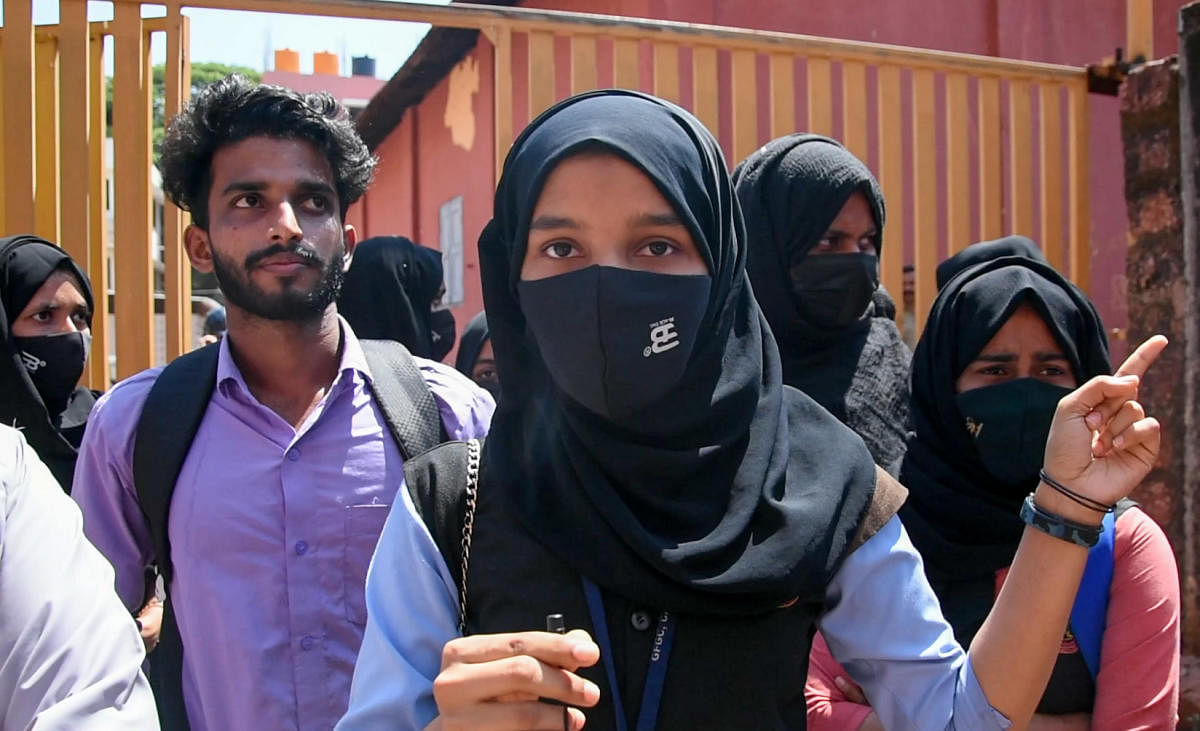
The Karnataka High Court’s judgement on the petition by some Muslim girl students on the hijab issue is flawed and disappointing. Most of the issues the court deems to have settled need to be reviewed at the highest judicial level. Instead of settling the issues, the judgement has raised more questions. Between ‘reasonable accommodation’ and ‘reasonable restriction’ on the hijab, the court ordered the latter. That’s a travesty, because the Constitution-makers envisaged primacy for individual liberty and rights, above the rights of the State to curb them. The court may have sufficient ground to say that wearing of the hijab is not an essential religious practice. Indeed, even if it were, it should be measured against the touchstone of constitutionality. But the Constitution does grant all the relevant rights that are enough to accommodate a headscarf in an institutional uniform – the right to religious freedom and practices, the right to freedom of expression, the right to privacy, the right to education. It is only by a very restrictive interpretation of these rights that ‘reasonable accommodation’ could have been denied.
In doing so, and in delivering a hijab-centric judgement, the court has overlooked the larger picture – of the visible symbols and identifiers of other religions. Are they all going to be banned from the classroom now? If not, it will amount to discrimination; if yes, it will be such a bland, colourless future -- where everyone is expected to look the same -- that we must imagine this Holi. The idea of unity in diversity, the idea that we can all be different and yet together, that core idea of fraternity – which the government side has been misinterpreting as arising out of uniformity – has been lost sight of.
The court may be right when it says that the state government has powers to make these rules and it was not in violation of Articles 14 and 15 of the Constitution in issuing the February 5, 2022, Government Order (GO) that banned the hijab in colleges that had a dress code. But being able to make rules is one thing; making them with a narrow, politically motivated view is quite another. Under the Karnataka Education Act, 1983, no uniform is prescribed for colleges, much less any penalty – such as being denied entry into the classroom – for not adhering to one.
Yes, institutions should be able to place reasonable restrictions on the dress and conduct of students within their walls. But how does the hijab threaten public order, morality or health, the grounds for reasonable restrictions on the right to religious freedom? Indeed, the court itself had to exonerate the government and dismiss the ground of ‘public order’ cited in the GO as perhaps a case of bad drafting by officials. Was it really? The uniform, and the right of the institution to prescribe and enforce one, should not be pitched against the more fundamental rights of the individual under the Constitution, including the right to education.
At the core of it, the Muslim girls’ prayer was simple: There is already a dupatta as part of the uniform; let us wear it on the head as hijab. That could certainly have been accommodated. It could have been settled between the students/parents and the college authorities. The political controversy that arose over it was clearly deliberately fuelled. The court noted with distress how all of a sudden, in the middle of the academic year, the hijab controversy was generated and blown out of proportion by the “powers that be” and some “unseen hands”. But the visible hand of the government, the ruling party, and right-wing Hindutva groups – not least in the distribution of saffron shawls to thousands of students, thus making them all part of a larger political game – should take the greater blame for it. Indeed, the saffron shawl was a red herring deliberately brought into play. That the court ruled against both religious identifiers – hijab and saffron shawls – gave the judgement an aura of evenhandedness worthy of a secular State, but then what shall we do with the sacred ash, the vermillion marks, the Kumkum or bindi, the mangalsutra, the Sikh turban, the Brahmin student’s tuft of hair? The court has left this question unanswered.
In reasoning out its order, the court dismissed the contrary judgements of other High Courts on the matter of the hijab as not relevant to the case before it; it also dismissed the contention that Karnataka could follow the example of the central government rules that allow the hijab to be worn in the Kendriya Vidyalaya schools, citing the federal structure. But the last word has not yet been said on the matter. It falls to the Supreme Court to resolve it. It must be hoped that the Supreme Court will hear and rule on the matter early. It will do well to settle the questions surrounding the ‘essential religious practice’ touchstone and whether the courts should enter the thicket of determining what’s essential and what’s not in a religion.
The High Court judgement, even if upheld by the Supreme Court, will apply to government colleges that have a prescribed dress code. Given the restrictive application of the ruling, was it worth the involvement of the state government in the whole controversy? Its worth lay perhaps in the political gains the ruling party sought to make from it. The government must now worry about the impact this will have on the education of the girl child, particularly ones from the minority and vulnerable communities. It will do well to remind itself that education is the end, not the uniform. Uniforms cannot be an iron rule, and even when required, they should have the flexibility to accommodate the diversity of the country.